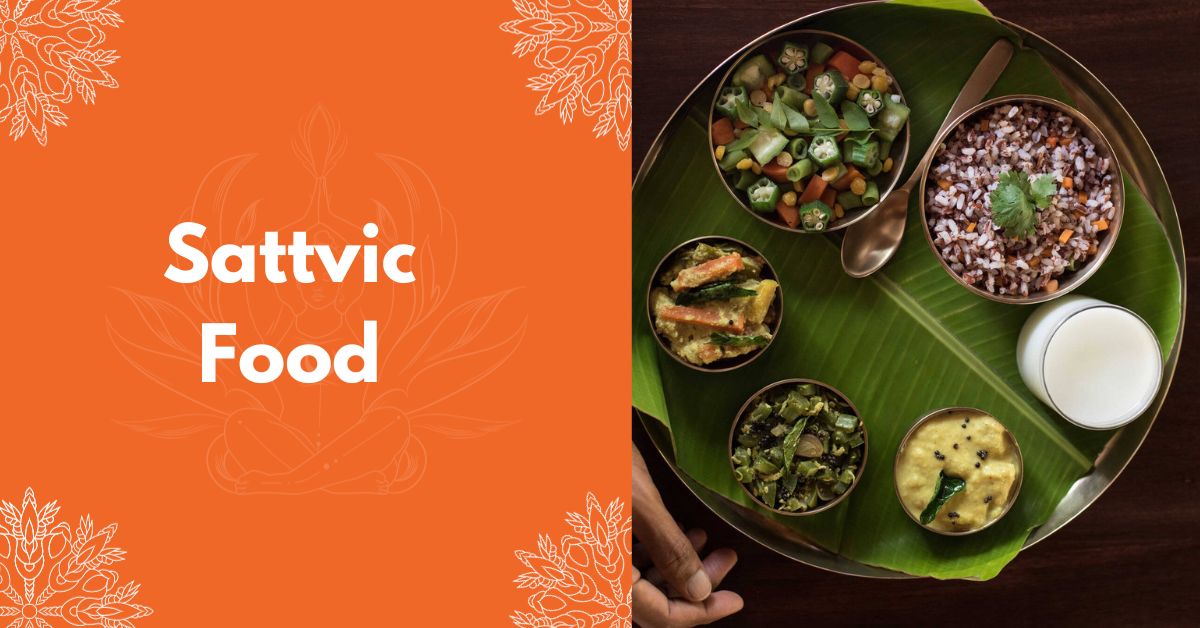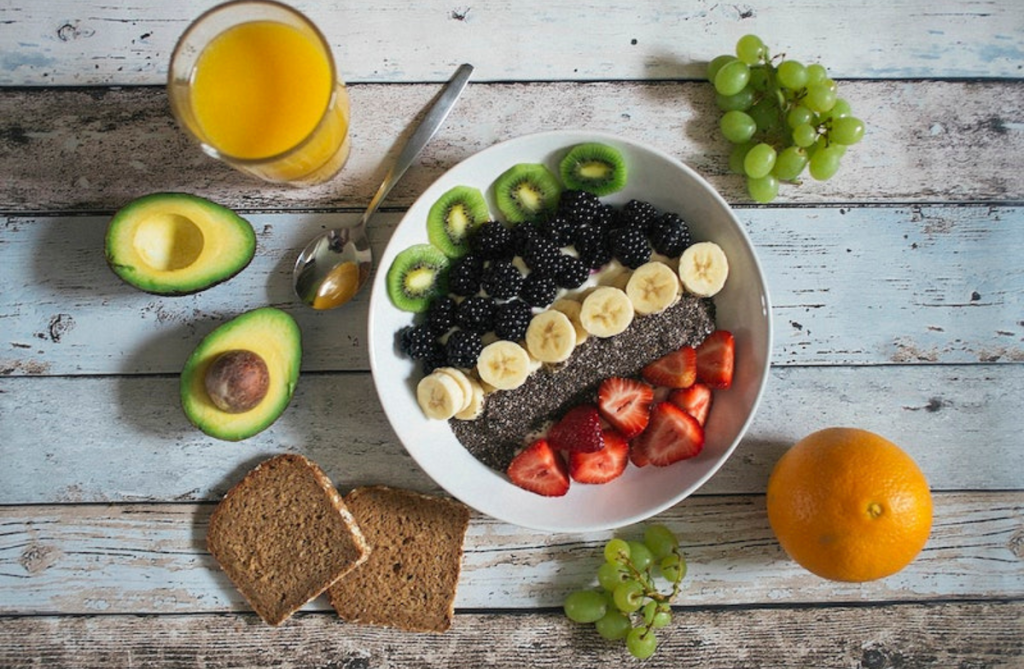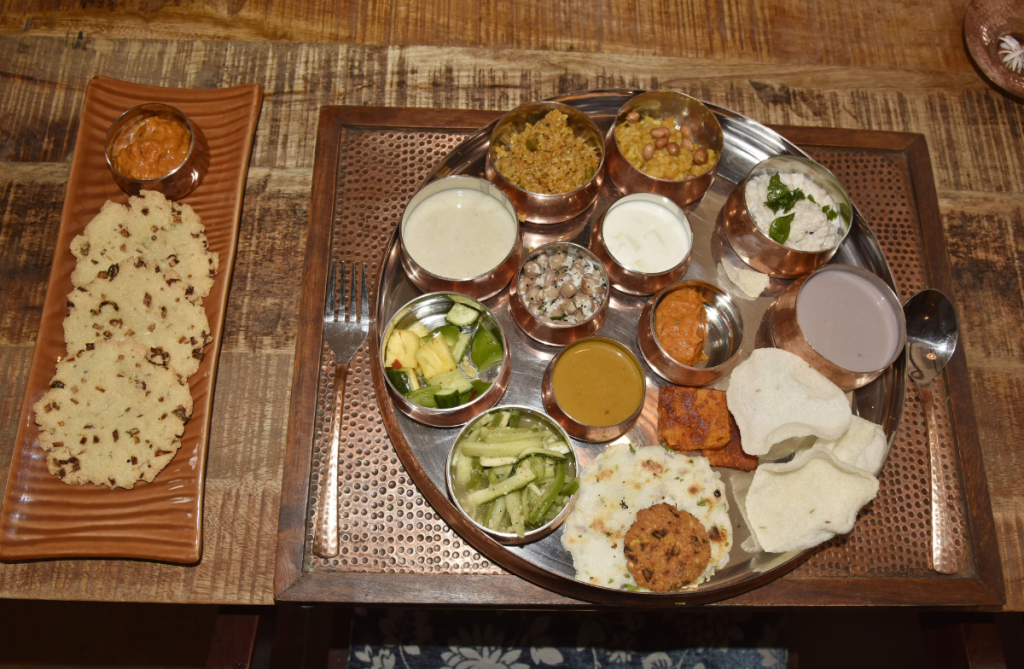
Sattvic Food: Benefits, Diet, Recepies
“Savor the purity of Sattvic food, nourishing body and soul with natural, wholesome ingredients. Elevate your well-being.”
In a world filled with hustle and bustle, finding peace and harmony can seem like an elusive goal. However, in the ancient science of Ayurveda, there is a concept known as sattva that embodies balance, harmony, and light. Sattvic food, a key component of Ayurvedic practice, is believed to promote mental clarity, vitality, and overall well-being. In this comprehensive guide, we will explore the principles and benefits of a sattvic diet, as well as provide practical tips and delicious recipes to help you incorporate sattvic foods into your daily life.
Understanding Sattvic Foods

- The Three Gunas: Sattva, Rajas, and Tamas
- According to Ayurveda and Yoga philosophy, everything in the universe, including food, is composed of three qualities or gunas: sattva, rajas, and tamas.
- Sattva represents balance, harmony, and purity. It is the highest guna and is associated with clarity, peace, and spiritual growth.
- Rajas, on the other hand, represents activity, passion, and restlessness. It can lead to stress and overexcitement when dominant.
- Tamas is characterized by inertia, darkness, and dullness. It is associated with heaviness, lethargy, and negative emotions.
- The Essence of Sattvic Foods
- Sattvic foods are considered to be balancing, harmonious, and nourishing to both the body and mind.
- They are typically fresh, organic, and minimally processed, maximizing their prana or life force energy.
- Sattvic foods are known for their lightness, easy digestibility, and ability to promote mental clarity and spiritual growth.
- Examples of Sattvic Foods
- Fruits: Apples, berries, mangoes, pears, and more. Fresh fruits provide essential vitamins, minerals, and antioxidants.
- Vegetables: Leafy greens, cruciferous vegetables, carrots, cucumbers, and others. These provide fiber, phytonutrients, and hydration.
- Whole Grains: Quinoa, brown rice, millet, and amaranth. Whole grains are a great source of complex carbohydrates and fiber.
- Legumes: Lentils, mung beans, chickpeas, and black beans. Legumes offer plant-based protein, fiber, and essential minerals.
- Nuts and Seeds: Almonds, walnuts, chia seeds, flaxseeds, and sesame seeds. They provide healthy fats, protein, and micronutrients.
- Dairy Products: Fresh milk, ghee (clarified butter), and cheese. Dairy products should be consumed in moderation and sourced ethically.
- Herbs and Spices: Turmeric, ginger, cinnamon, basil, and cardamom. These add flavor and therapeutic properties to dishes.
- Sweeteners: Honey, maple syrup, and jaggery. These natural sweeteners can be used sparingly to enhance taste.
The Benefits of a Sattvic Diet

- Physical Well-being
- Sattvic foods are rich in essential nutrients, promoting optimal physical health and vitality.
- A diet rich in fruits, vegetables, and whole grains can reduce the risk of chronic diseases such as heart disease, cancer, and diabetes.
- Sattvic foods are typically low in saturated fats and processed sugars, supporting weight management and overall well-being.
- Mental Clarity and Emotional Balance
- Sattvic foods are believed to have a calming effect on the mind, promoting mental clarity and emotional stability.
- They are known to enhance concentration, memory, and focus, making them beneficial for students, professionals, and anyone seeking mental clarity.
- The lightness and purity of sattvic foods can help reduce feelings of heaviness, lethargy, and mood swings.
- Spiritual Growth and Awareness
- Sattvic foods are considered to be conducive to spiritual growth and self-awareness.
- By consuming foods that are believed to possess positive energy and prana, individuals may experience a deeper connection with their inner selves and the world around them.
- Sattvic foods are often recommended for those on a spiritual path or practicing meditation and yoga.
- Enhanced Digestion and Energy Levels
- Sattvic foods are typically easy to digest, allowing the body to efficiently absorb nutrients and maintain optimal energy levels.
- They are less likely to cause digestive discomfort, bloating, or indigestion, promoting overall digestive health.
- The light and nourishing qualities of sattvic foods provide sustained energy throughout the day without the energy crashes associated with processed foods.
Incorporating Sattvic Foods into Your Diet

- Mindful Meal Planning
- Plan your meals in advance to ensure a balanced and sattvic diet.
- Include a variety of fresh fruits, vegetables, whole grains, legumes, and nuts in your meal plans.
- Opt for organic and locally sourced ingredients whenever possible to maximize the prana and minimize exposure to harmful chemicals.
- Embrace Seasonal and Local Produce
- Choose fruits and vegetables that are in season, as they are at their peak freshness and nutritional value.
- Support local farmers and markets by purchasing locally grown produce, which also reduces the carbon footprint associated with transportation.
- Cooking Methods and Techniques
- Use gentle cooking methods such as steaming, sautéing, and baking to preserve the natural flavors and nutrients in sattvic foods.
- Avoid deep-frying and excessive use of oil, as it can increase the heaviness and tamasic qualities of the food.
- Mindful Eating Practices
- Practice mindful eating by savoring each bite, chewing slowly, and paying attention to the textures and flavors of your food.
- Avoid distractions such as electronic devices or television while eating, allowing yourself to fully experience the nourishment and enjoyment of the meal.
Recipes for Sattvic Delights

- Sattvic Breakfast Bowl
- Ingredients: Quinoa, fresh fruits (such as berries and mango), flaxseeds, almonds, coconut flakes, and a drizzle of honey.
- Instructions: Cook quinoa according to package instructions. Once cooked, transfer it to a bowl and top with fresh fruits, flaxseeds, almonds, coconut flakes, and a drizzle of honey.
- Sattvic Lunch Salad
- Ingredients: Mixed greens, cucumber, cherry tomatoes, avocado, sprouts, sunflower seeds, and a lemon-tahini dressing.
- Instructions: Combine mixed greens, sliced cucumber, halved cherry tomatoes, diced avocado, sprouts, and sunflower seeds in a large bowl. Drizzle with a mixture of freshly squeezed lemon juice and tahini as a dressing.
- Sattvic Dinner Stew
- Ingredients: Mixed vegetables (carrots, broccoli, zucchini, bell peppers), cooked lentils, turmeric, cumin, ginger, garlic, vegetable broth, and fresh cilantro.
- Instructions: In a large pot, sauté mixed vegetables with turmeric, cumin, ginger, and garlic. Add cooked lentils and vegetable broth, then simmer until the vegetables are tender. Garnish with fresh cilantro.
Additional Tips for a Sattvic Lifestyle

- Cultivate Mindfulness and Meditation
- Incorporate mindfulness and meditation practices into your daily routine to deepen your connection with yourself and the world around you.
- Engage in activities that promote mental and emotional well-being, such as journaling, yoga, or spending time in nature.
- Practice Ahimsa (Non-Violence)
- Consider adopting a vegetarian or vegan lifestyle to align with the principles of ahimsa, which advocates for non-harming to all living beings.
- If you choose to consume animal products, prioritize ethically sourced and sustainable options.
- Connect with Nature
- Spend time in nature to recharge and reconnect with the natural rhythms of life.
- Take walks, practice outdoor yoga, or simply sit quietly in a park or garden to absorb the healing energy of nature.
- Detoxify Your Environment
- Create a clean and harmonious living space by minimizing exposure to toxins and clutter.
- Use natural cleaning products, incorporate plants into your home, and declutter your surroundings to promote a peaceful and sattvic environment.
Conclusion

Incorporating sattvic foods into your diet and lifestyle can have profound effects on your physical, mental, and spiritual well-being. By embracing a balanced and harmonious approach to nutrition, you can enhance your vitality, clarity, and overall quality of life. Remember to listen to your body, cultivate mindfulness, and choose foods that nourish both your body and soul. Embrace the peace and lightness that sattvic foods bring, and embark on a journey of holistic well-being and self-discovery.
FAQ (Frequently Asked Question)
Is Sattvic food suitable for everyone?
Sattvic food can be adapted to most people, but it’s essential to consider your individual constitution and consult with an Ayurvedic practitioner for personalized guidance.
What are some common spices used in Sattvic cooking?
Sattvic cuisine often includes spices like cumin, coriander, and fennel, chosen for their digestive and flavor-enhancing properties.
Can I have dairy in a Sattvic diet if I’m lactose intolerant?
Sattvic diets can be adapted for lactose-intolerant individuals by choosing lactose-free dairy alternatives like almond milk or coconut yogurt.
What are some practical tips for practicing mindful eating?
Mindful eating involves paying full attention to your food, savoring each bite, and expressing gratitude. It’s a practice that can be cultivated over time.
Are there any Sattvic food restaurants or communities I can join?
In many regions, there are Sattvic restaurants and communities where you can explore Sattvic cuisine and connect with like-minded individuals on a similar journey.

